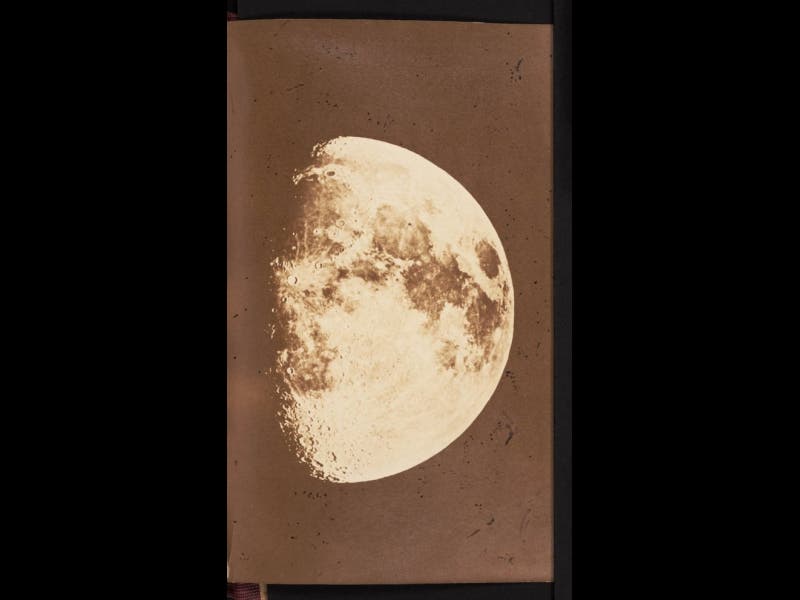Scientist of the Day - Lewis Rutherfurd
Lewis Rutherfurd, an American photographer, was born Nov. 25, 1816. After the daguerreotype was invented in 1839, Rutherfurd not only mastered the art of photography, but he became one of the first to capture astronomical objects, especially the Moon, with his lens. Rutherfurd even invented a new kind of telescope with an "actinic" rather than a visual focus, which is to say it was designed specifically for the violet light waves (the actinic or chemical rays) that affect the photographic plate, rather than the waves to which the human eye is receptive. In our exhibition of 1989, The Face of the Moon, we displayed a Rutherfurd photograph of the moon, taken Sep. 16, 1870, which was mounted in a book, The Moon, by Richard A. Proctor (1873); there was one other Rutherford lunar photograph in that same book that we did not display, but you can see here (see first image above).
Those book photographs were not much bigger than postcards, but the Hallmark Collection at the Nelson-Atkins Museum of Art in Kansas City owns an original Rutherfurd lunar photograph, taken Mar. 6, 1865, that is fully 16 x 22 inches in size. It was on display some years ago in a wonderful exhibition called Heavens: Photographs of the Sky & Cosmo, and it was amazing to see how vivid and luminous such an early photograph could be. Rutherfurd's print, called an albumen print because of the manner of production of the positive paper print, was made just 25 years after photography was invented. You can see that print here, but no enlargement is available. We have a much smaller (3x5) print of that same lunar photograph as a frontispiece of an 1875 book, The Chemistry of Light and Photography, but it is a woodburytype, which means it has incredibly good resolution (see second image above).
We have also added to the photostream a photoengraved portrait of Rutherfurd that appeared in Popular Science Monthly in 1893, the year of his death (see third image above).
Dr. William B. Ashworth, Jr., Consultant for the History of Science, Linda Hall Library and Associate Professor, Department of History, University of Missouri-Kansas City









